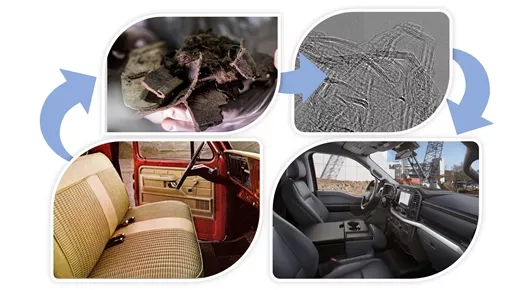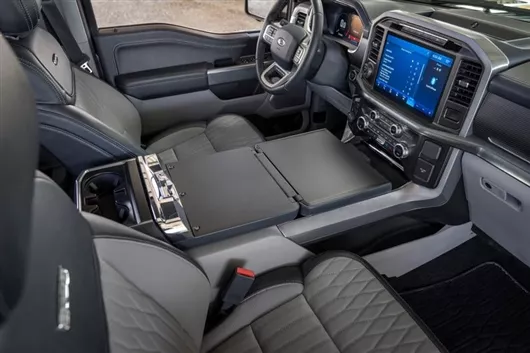A study could turn recycled automotive waste plastic into graphene and use it to make new automotive parts through an energy-saving technology The research results provide a potential treatment method for the landfill waste generated by 1.4 billion passenger cars in use worldwide. The related research was recently published in communication engineering.

The figure shows the process of cutting waste automotive plastics in the landfill but recycling and upgrading them to graphene. Graphene is a high-value nano material, which is currently used by Ford Motor Company as an industrial polymer reinforcing agent. Pictures from Ford Motor Company and Rice University
Waste plastics produced by end-of-life vehicles account for 1trillion kg of all plastic wastes to be landfilled, with an average of 200-350 kg of plastics per vehicle. For various reasons, such materials are difficult to reuse. For example, many of these materials are engineering transformed plastics, which cannot be recycled; Moreover, the traditional recycling method needs to separate different types of plastics, and the recycling cost is high.
Recent studies have shown that it is feasible to turn waste plastics into graphene. Graphene is a valuable material, worth $60000 to $200000 per ton. It has high conductivity, high thermal stability, chemical stability and other practical characteristics. This process may be a feasible way to recycle automotive plastics into graphene. Graphene is sometimes used as an additive in some automotive plastics to improve strength and noise absorption.
James tour and colleagues from Rice University in Texas demonstrated the use of an energy-saving technology called Joule thermal flash to convert used car plastics into high-quality graphene. This technology uses an electric current to heat carbon and turn it into graphene, using only low-cost facilities, without the need to separate or classify plastics, and without solvents, furnaces or water.
The author smashed the bumper, gasket, carpet, cushion, seat and door frame batten of Ford F-150 pickup truck, and demonstrated the general steps of this process. They also used the recovered graphene to strengthen the new automotive plastics, and found that its performance was equivalent to that of the new graphene containing plastic composites put into production by Ford.

In 2022, for the interior of F-150, graphene is used as a reinforcing agent in industry because of its excellent strength, stability and light weight. Picture from Ford Motor Company

Author Kevin Wyss holds a bottle of graphene made of waste plastic and a piece of graphene reinforced polymer used by Ford Motor Company for experiments. Picture from Rice University
The author then used the Joule thermal flash technology to heat this kind of graphene / plastic composite material recovered from waste to produce more graphene.
In addition, the author also found that compared with the traditional graphene production method, Joule thermal flash technology has lower energy demand, global warming and water consumption.
The author believes that this research may become a progress towards a more environmentally friendly production mode of graphene.

The author Kevin Wyss holds the discarded automobile waste plastics, which are recycled and upgraded to graphene. These waste plastics come from landfills and have not been cleaned or purified before use. Picture from Rice University
Relevant paper information: https://doi Org/10.1038/s44172-022-00006-7
Author: fengweiwei source: China Science Daily